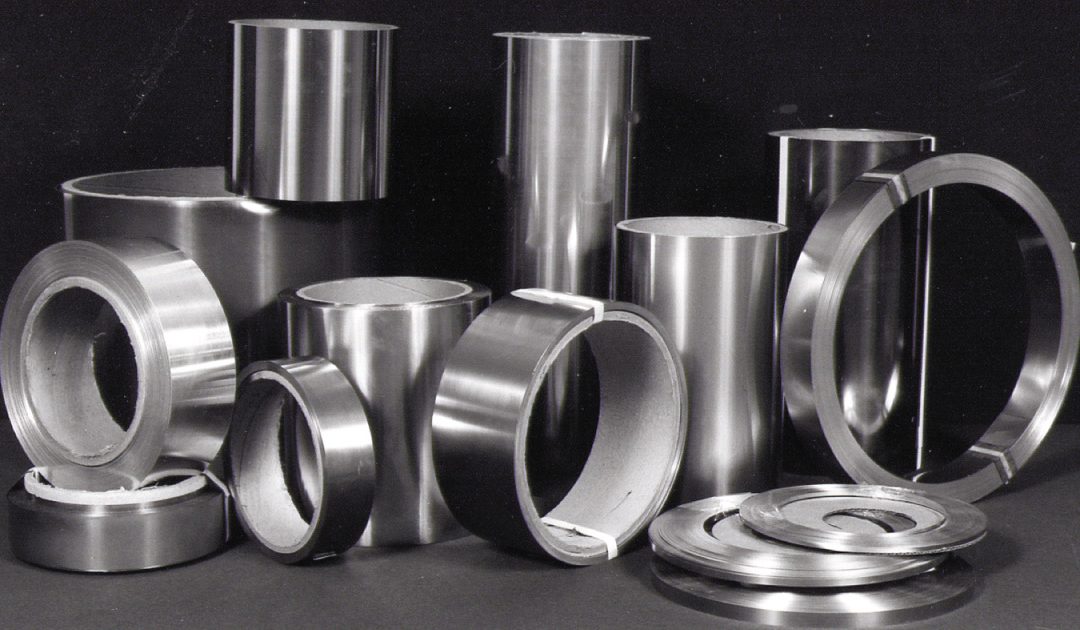The relentless pursuit of efficiency and performance remains an unwavering mantra in aerospace engineering. Every meticulously designed component, from the colossal wings slicing through the sky to the thunderous engines propelling the aircraft forward, plays a critical role in pushing the boundaries of flight. In this constant quest for excellence, even the smallest weight reduction can translate to significant fuel savings and increased payload capacity. However, achieving this goal often presents a complex materials selection challenge.
At Precision Alloy Services, we understand the constant struggle in aerospace engineering of achieving exceptional performance without sacrificing weight efficiency. Traditional materials often force engineers into a compromise. Here’s where Custom Alloy 465 Stainless alloy AMS 5936 emerges as a revolutionary game-changer. This innovative material offers a unique blend of properties that are revolutionizing the design of lightweight, high-performance components for the next generation of aircraft.
The Challenges of Traditional Aerospace Materials
Modern aircraft navigate a demanding environment. They require exceptional:
- Strength: To withstand the immense stresses of takeoff, flight, and landing. The wings, fuselage, and landing gear need to be robust enough to handle these stresses without compromising safety.
- Lightweight Design: In the aerospace industry, reducing weight is a top priority. Every kilogram shaved off an aircraft translates directly into fuel savings and the ability to carry more passengers or cargo. Custom Alloy 465 AMS 5936 addresses this challenge head-on, offering exceptional strength at a fraction of the weight of traditional materials, enabling innovative lightweight designs without compromising performance or safety.
- Corrosion Resistance: Aircraft are exposed to a harsh environment during operation. Moisture, salt spray, and extreme temperature fluctuations can result in corrosion, which can weaken the structure and compromise safety. Materials with superior corrosion resistance are essential for long-term aircraft performance and structural integrity.
These seemingly contradictory requirements pose a significant challenge for aerospace engineers.
Custom Alloy 465: A Game Changer for Lightweight, High-Performance Components
Custom Alloy 465 offers a compelling solution to these challenges. This high-performance stainless steel boasts a unique combination of properties that make it ideally suited for various aircraft applications:
- High Strength-to-Weight Ratio: Custom Alloy 465 possesses excellent tensile strength, exceeding that of many traditional aerospace alloys. This allows for the use of thinner yet stronger components, resulting in significant weight reduction without compromising structural integrity.
- Exceptional Corrosion Resistance: Aerospace components are constantly exposed to corrosive elements, including moisture, de-icing fluids, and aviation fuels. Custom Alloy 465 exhibits superior resistance to various forms of corrosion, including pitting, crevice corrosion, and stress corrosion cracking. This ensures that components made from this alloy maintain their structural integrity and longevity, reducing maintenance requirements and enhancing safety.
- Fatigue Resistance: Aircraft components undergo cyclic loading during flight, which can lead to fatigue failure over time. Custom Alloy 465 demonstrates exceptional fatigue resistance, maintaining its strength and integrity even after repeated stress cycles. This makes it suitable for critical components like landing gear, where fatigue failure can have catastrophic consequences.
- Temperature Resistance: Custom Alloy 465 Stainless alloy AMS 5936 retains its mechanical properties at elevated temperatures, making it suitable for applications near engines and other heat-generating components. Its ability to withstand both high and low temperatures without significant degradation further broadens its potential applications in aerospace.
- Machinability and Formability: Custom Alloy 465 exhibits good machinability and formability, making it easier to fabricate complex aircraft parts. This translates to lower production costs and faster turnaround times for manufacturers.
Beyond Weight Reduction: Additional Benefits of Custom Alloy 465
Next-Generation Aerospace – The benefits of Custom Alloy 465 extend beyond just weight reduction. Its exceptional corrosion resistance translates to reduced maintenance requirements and a longer lifespan for aircraft components. Additionally, its good machinability and formability contribute to lower production costs.
The Future of Aerospace: Lighter, Stronger, and More Efficient
- Custom Alloy 465 Stainless alloy AMS 5936 isn’t just another alloy; it’s a catalyst for the next generation of aerospace innovation. This material is at the forefront of the industry’s relentless pursuit of lighter, stronger, and more efficient aircraft. By pushing the boundaries of what’s possible in material science, Custom Alloy 465 unlocks a new era of aircraft design and performance.
- Its remarkable strength-to-weight ratio and corrosion resistance are paving the way for a new generation of aircraft that are not only lighter and more fuel-efficient but also safer and more durable. As the industry strives for greater sustainability and reduced carbon footprints, materials like Custom Alloy 465 are instrumental in achieving these ambitious goals. The future of aerospace is undeniably lighter, stronger, and more efficient, and Custom Alloy 465 stands as a testament to this exciting evolution.
Precision Alloy Services: Your Partner in Next-Generation Aerospace
As a leading distributor of Custom Alloy 465 Stainless alloy AMS 5936, Precision Alloy Services is here to empower your next-generation aerospace project. We are committed to providing the aerospace industry with innovative materials and exceptional service. We offer a comprehensive inventory of Custom Alloy 465 AMS 5936 backed by our expertise and commitment to quality. Let us help you take flight with lighter, stronger, and more efficient aircraft components.
Blog by Foster Technology Group

